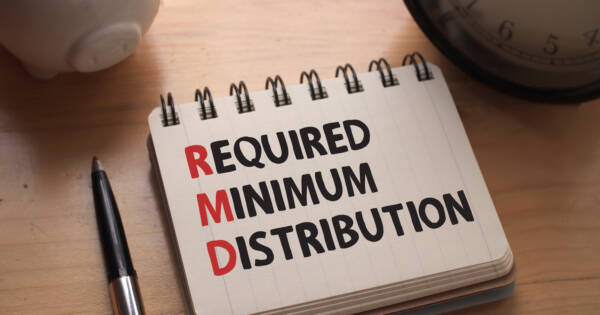outDividends can be an important source of wealth creation. They can work for you as you build your nest egg or become an important source of income in retirement. By definition, dividends are the distribution of some of a company’s earnings to shareholders. They are typically paid out in the form of cash or additional stock. Most companies report their dividends on their cash flow statements. That’s an accounting summary issued directly to investors (and sometimes as a news release). However, you can also calculate dividends yourself. You just need a balance sheet and an income statement, or a company’s annual financial report. In this article, we’ll explain how to calculate dividends on your own — without the aid of a company’s financial documents.
The Magic Formula
There is a set formula for calculating dividends. It’s not even that complicated. It’s simply this: annual income – (minus) retained earnings = (equals) dividends paid.
You need to look at two things when calculating dividend payments – net income and retained earnings. First, look at a company’s balance sheet, which is a record of its assets and liabilities. It will reveal how much money a company has kept on its books in retained earnings. Retained earnings are the total earnings a company has held onto throughout its history, that have not been returned to shareholders in the form of dividend payments.
Take a company’s income for a year. Then subtract it from the retained earnings. That total is how much they paid out in dividends. For example, let’s say a company earned $100 million in 2020. They ended the year with $20 million of retained earnings. That means it paid out $80 million in dividends to shareholders. The math is simply $100 million of income – (minus) $20 million of retained earnings = (equals) $80 million in dividend payments.
Dividend Payout Ratios
One of the most useful reasons to calculate a company’s total dividend payments is because it helps to determine what is known as the “dividend payout ratio,” or “DPR.” This measures the percentage of a company’s net income that is paid to shareholders in the form of dividends.
The DPR formula is: Total dividends ÷ net income = dividend payout ratio. Let’s stick with our previous example. If the total dividend payout of a company was $80 million and their net income was $100 million, you would divide $100 million into $80 million. That gives you a dividend payout ratio of 0.80%.
The dividend payout ratio is helpful in measuring a company’s ability to keep paying or increasing its annual dividend. The higher the payout ratio, the harder it could be to maintain a dividend over the long-term. Generally speaking, the lower a dividend payout ratio, the better it is for shareholders.
Dividends Per Share
It’s also possible to convert a dividends payment into a per-share figure. This is simply done by dividing the total value of a dividend payments by the number of shares outstanding. You can find this information on quarterly financial statements and in a company’s annual report. The formula for dividends per share is: total dividends ÷ shares outstanding = dividends per share.
Our hypothetical company’s total dividend payout for 2020 was $80 million. Let’s assume they have 50 million shares outstanding. Some easy math shows that the dividend per share payment would be $1.60. The calculation would be $80 million of earnings, divided by the 50 million shares.
This calculation for dividends per share may not be completely accurate, though. A company may increase or lower its dividend payments during a year. Usually, dividends are paid out on a quarterly basis. However, they are also sometimes only paid out once per year. Companies can also periodically issue new shares or repurchase existing shares. That would change the share count and affect this calculation.
The Bottom Line
Fortunately for shareholders, there is a wealth of information available about dividend payments, dividend payout ratios, and dividends per share. Most publicly traded companies provide this information in their quarterly reports. You can also rely on annual financial statements or standalone press releases.
If you, for some reason, can’t find this information publicly available, you can always do the calculations yourself. Just use the methods outlined in this article. One final option would be to contact a reputable and experience stock broker. They can usually help you find the dividend information of any publicly traded company.
 Shutterstock
Shutterstock







